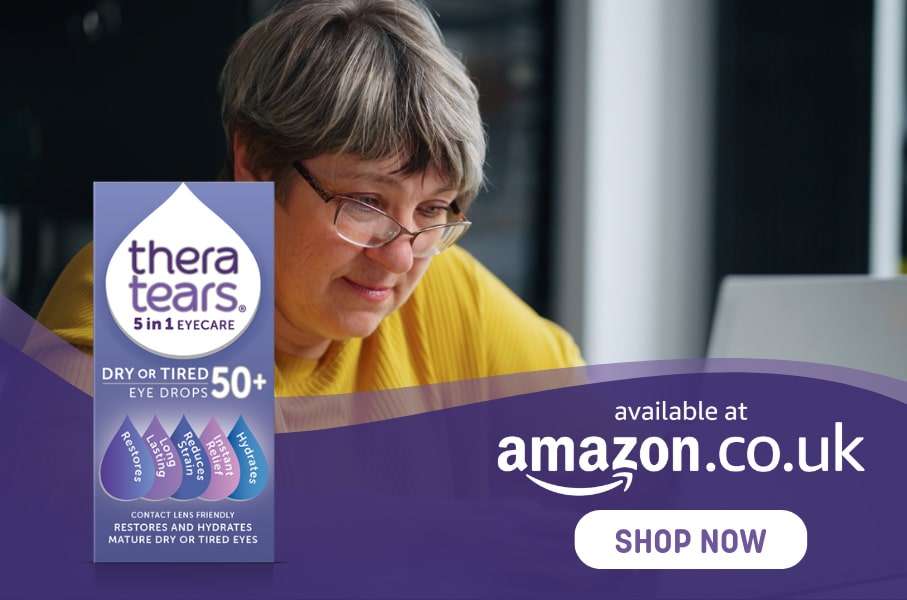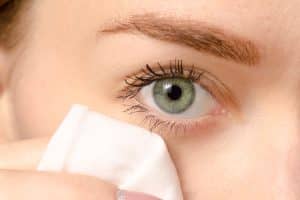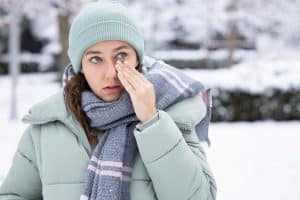There are lots of explanations for why people believe things that aren’t true about optical health. It’s not uncommon to learn something at school that is later disproven. You might also misunderstand what your optometrist has told you, or perhaps you believed something you were told by someone who had no real expertise at all.
Whatever the case, the most important thing is to learn which so-called facts are true and which can safely be ignored so you know how best to look after your eyes as you age. If you’re ever unsure about a specific notion relating to your eye health, the best thing to do is to ask a medical professional, preferably an eye specialist, to verify the facts for you.
In the meantime, let’s take a look at five common misconceptions about eye health.
Do eyes grow with age?
This is a great example of a fact that is true in certain circumstances, and not in others. The truth is that your eyes only grow in size during childhood and adolescence. This allows your eyes to develop from the smaller size you’re born with to the larger size of adult eyeballs. By the age of around 21, your eyeballs should be as big as they will ever be, and shouldn’t grow anymore.[1]
What is true, though, is that your eyes continue to develop and change throughout your adult life. The lenses of your eyes, in particular, will change, becoming slightly heavier every year for the rest of your life.[2]
Can eye shape change with age?
The shape of your eyes is determined by genetic factors, and it’s not believed that your eyeballs will change shape over the course of your lifetime. However, components of your eyes may change in shape. For instance, older people may find they struggle to focus more as they age, which is caused by a change in the shape of their lenses.
In addition, one thing that may give the appearance of an eye that has changed shape is the effects of ageing on the skin around the eye. As the skin of your eyelids and under-eye areas loses its elasticity, it can start to sag, altering the perceived shape of your eyes. It can be surprising how much difference a small change can make.[3]
Does being short sighted improve with age?
Another misconception that seems to be prevalent is the idea that myopia (short-sightedness) can improve with age. This is sometimes linked with children and teens who develop the condition, with parents believing that myopia will correct as they grow up and therefore nothing needs to be done while they are still young.
Unfortunately, this isn’t the case. If you or your child has been diagnosed with myopia, your optometrist will be able to give you a more detailed insight into the condition and what can be done about it. Prescription lenses may be appropriate to correct the loss of long distance vision.
Some people also believe that myopia will correct itself as presbyopia develops in their later years. Presbyopia makes it harder to see things that are close to you, so it’s understandable to assume that the two conditions might cancel each other out and leave your vision normal. Sadly, it’s far more likely that you’ll experience poor or diminished vision for things that are close and things that are far away. In this case, multifocal lenses may help to counteract the issue.[4]
Can eye yoga improve your sight?
Eye yoga is a trend that claims exercising your eyes can help to improve various optical conditions. Techniques involve rolling the eyes, holding your palms against your closed eyes and blinking rapidly. Similar to regular yoga, the intention is to stretch and strengthen the muscles.
However, there is no evidence to suggest that eye yoga can help with the majority of eye conditions, such as myopia, glaucoma or astigmatism. If you have or suspect you have any of these conditions, it’s best to get the advice of a specialist eye doctor to find out the most effective course of action.[5]
With that said, eye yoga may be effective in reducing eye strain associated with screen usage. The techniques involved may soothe minor irritation and tiredness – although it can be just as important to give your eyes a rest. Anyone who uses screens for more than a few hours a day is advised to try the 20:20:20 to reduce eye strain. All you need to do is focus your eyes on an object 20 feet away from you for at least 20 seconds, every 20 minutes.[6]
Plus, if you find yourself suffering with dry eyes or eye strain more as you get older, you might find specialised eye drops helpful. TheraTears® Dry or Tired 50+ Eye Drops For Older Eyes contain hyaluronic acid to refresh and rejuvenate mature eyes and replenish the natural tear film to help reduce irritation.
Can 20/20 vision prevent presbyopia?
It’s comforting to believe that if we take all the advice of our optometrists, we can avoid the fate of presbyopia. However, this simply isn’t true. Presbyopia is a natural consequence of ageing that comes to us all – even those of us lucky enough to have 20/20 vision.
Although some treatments may help to relieve the side effects or delay the onset of presbyopia, it’s pretty much guaranteed that you’ll develop the condition eventually, no matter how well you look after your sight. Fortunately, presbyopia is easily correctable in the majority of cases, with options ranging from simple reading glasses to specialist eye surgery. With the help of an optometrist, you should still be able to do close work and manage your usual everyday tasks such as reading, driving and writing.[7]
Resources:
[1] https://www.aao.org/eye-health/ask-ophthalmologist-q/are-eyes-fully-grown-at-birth
[2] Mohamed, Ashik, and Robert C Augusteyn. “Human lens weights with increasing age.” Molecular vision vol. 24 867-xxx. 31 Dec. 2018 Available at: https://www.ncbi.nlm.nih.gov/pmc/articles/PMC6382474/
[3] https://www.guidedogs.org.uk/getting-support/information-and-advice/eye-health/ageing-your-eyes/
[4] https://www.aao.org/eye-health/ask-ophthalmologist-q/distance-vision-improving-with-age
[5] https://www.health.harvard.edu/diseases-and-conditions/the-lowdown-on-eye-exercises
[6] Gupta, Satish Kumar, and S Aparna. “Effect of Yoga Ocular Exercises on Eye Fatigue.” International journal of yoga vol. 13,1 (2020): 76-79. doi:10.4103/ijoy.IJOY_26_19 Available at: https://www.ncbi.nlm.nih.gov/pmc/articles/PMC6937872/
[7] https://www.aao.org/eye-health/diseases/what-is-presbyopia








